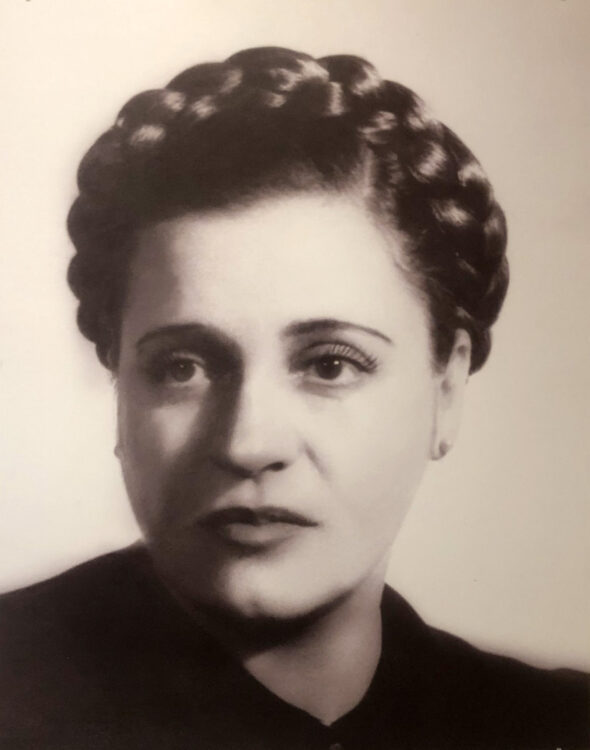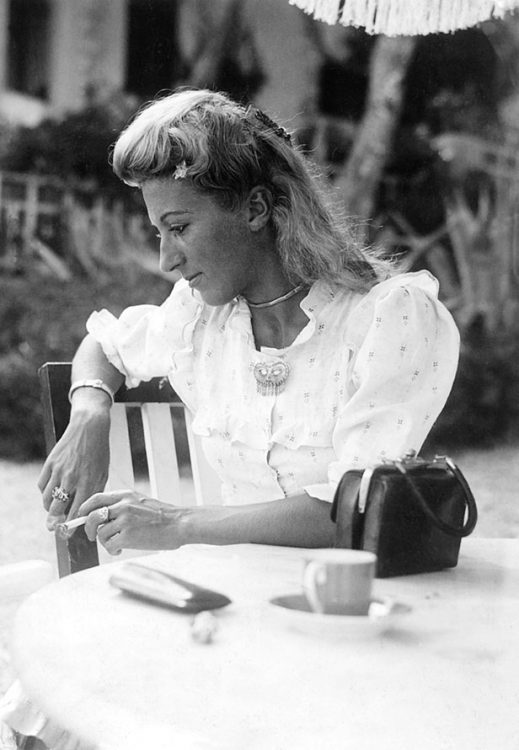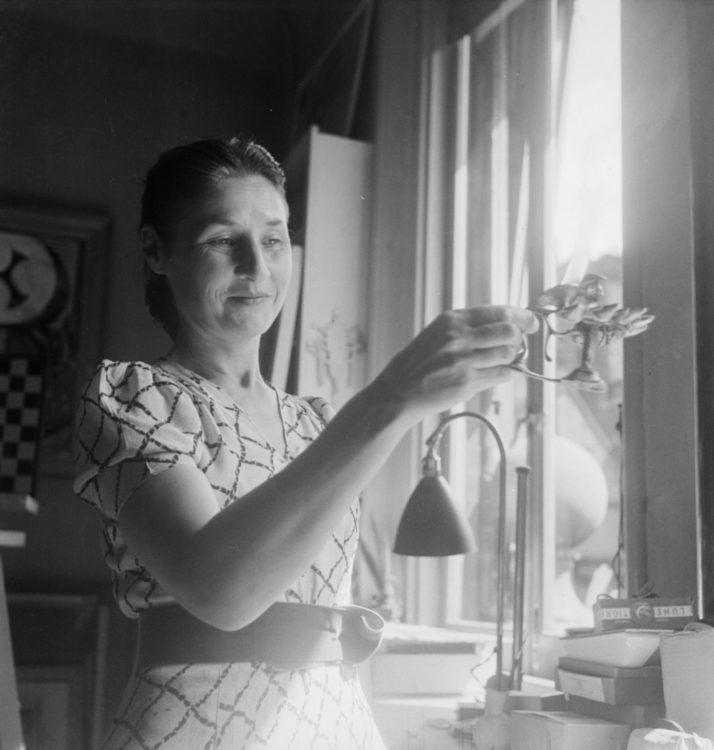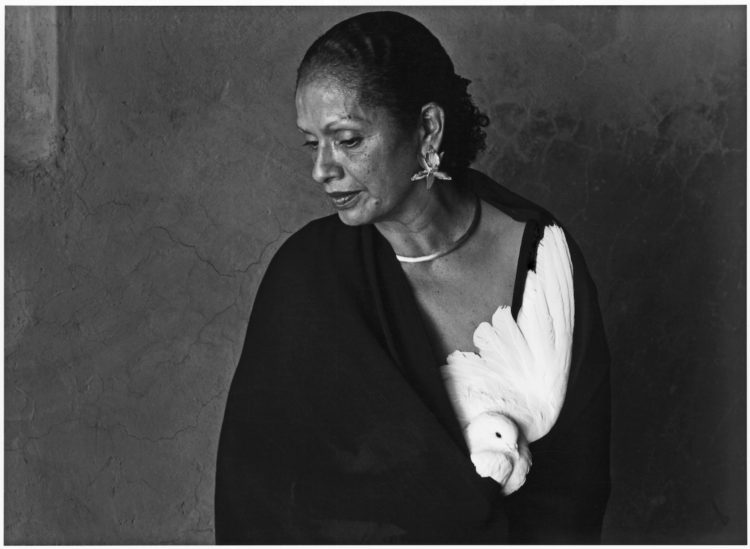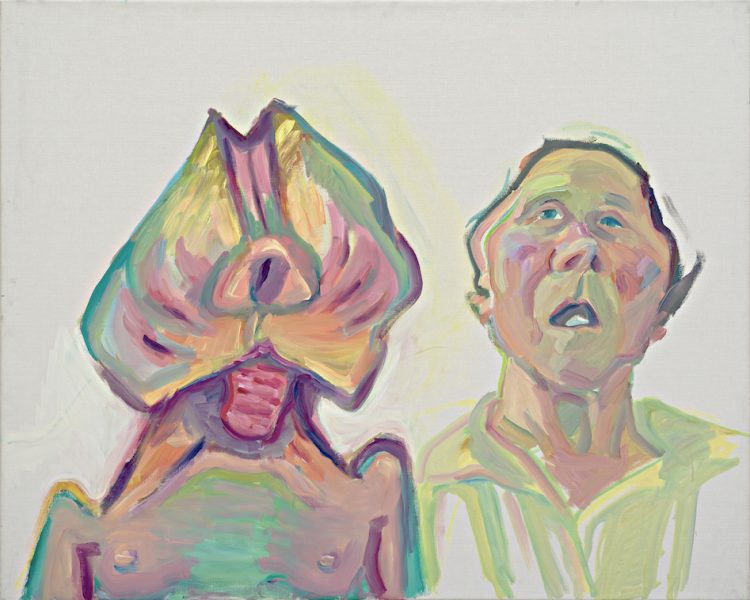Review
The exhibition at the Victoria and Albert Museum (V&A) dedicated to Frida Kahlo (1907-1954) was built around a singular event: the opening in 2004 of a bathroom at the Casa Azul (now the Museo Frida Kahlo) in Mexico, which, at the time of her death, had been sealed by her husband, Diego Rivera (1886-1957), and the ensuing discovery of her personal effects – clothing, jewellery, toiletries and make-up, medicine cabinet, as well as letters and photographs. Unearthed and restored by the museum teams, these objects shed new light on the work of F. Kahlo and reveal the extent to which the artist made her appearance an extension of her art.
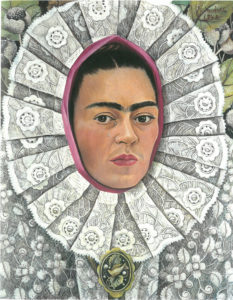
Frida Kahlo, Self-Portrait, 1948, oil on canvas, © Banco de México, Fiduciary of the Trust of the Diego Rivera and Frida Kahlo Museums, © ADAGP, Paris
The V&A, with its focus on the decorative arts, design, and costume, brings into perspective the major themes of Mexican art of the first half of the 20th century (respect for local practices, popular and traditional references, etc.), the work of F. Kahlo, and this unique collection. The first rooms are organised around the most documentary part of the collection. They show F. Kahlo as a little girl, at her first communion, then as a young woman strikingly dressed in a three-piece outfit, before the lens of her father-photographer. In 1925, she was hit by a bus, an event which distanced her from the doctor’s career that she had aspired to. Bedridden for many long months, she amused herself by creating her first self-portraits: physical suffering and painting were to be forever interconnected. Later, passionate about the 1910 revolution, she joined the Mexican communist party; after meeting D. Rivera, art became the centre of her life. F. Kahlo then began to wear certain ethnic clothes, with an increasingly pronounced taste for tehuana dress, which went hand-in-hand with her interest in pre-Hispanic art, but also in European and Chinese pieces.

Set of Isthmus of Tehuantepec, © Photo: Javier Hinojosa, © Diego Riviera and Frida Kahlo Archives, Banco de México, Fiduciary of the Trust of the Diego Riviera and Frida Kahlo Museums
The exhibition continues with the introduction of some of Kahlo’s personal effects. The curators analyse the relationships between the creation of her personal image and her painting: the more spectacular items – her plaster corsets decorated with motifs also visible in her bedside paintings – are juxtaposed with more banal objects, for instance her lipsticks and nail varnishes, with tones as lively as her palette.
The last room is captivating: self-portraits, jewellery, and photographs fan out around a display of about fifteen of the artist’s outfits. While restoring the artist’s magnetic presence, this space demonstrates the curators’ intuition of the semiotic and discursive power of the garments.
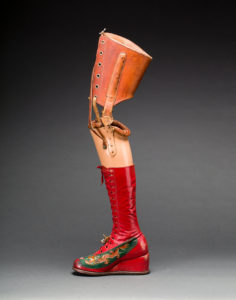
Leg prosthesis with leather and silk shoe embroidered with Chinese motifs, © Photo: Javier Hinojosa, © Diego Riviera and Frida Kahlo Archives, Banco de México, Fiduciary of the Trust of the Diego Riviera and Frida Kahlo Museums
The exhibition is generally convincing in its assertions about the relationship between F. Kahlo’s close attention to her appearance – which is evident in many different circumstances: the reconstruction of the mutilated body, the political affirmation of a hybrid identity, and her oeuvre itself. However, its exaltation of intimate pain is regrettable: the display cases devoted to medicine, for example, do not seem indispensable to the principal argument. Let us nevertheless celebrate the pursuit of the study of archives usually deemed trivial (clothing, accessories, etc.) by the academic world, inaugurated in 2017 by the Brooklyn Museum, in New York, with the Georgia O’Keeffe: Living Modern exhibition. In the case of F. Kahlo, this new trend has paradoxically managed to restore complexity to a body of work often eclipsed by the pop legend that the artist has become, in spite of herself.
Frida Kahlo: Making Her Self Up, from 16 June to 18 November 2018, Victoria and Albert Museum (London, United Kingdom).
Camille Viéville, "Frida Kahlo: Invention of the Self, Invention of the Oeuvre." In Archives of Women Artists, Research and Exhibitions magazine, . URL : https://awarewomenartists.com/en/magazine/frida-kahlo-linvention-de-soi-linvention-de-loeuvre/. Accessed 7 July 2025







